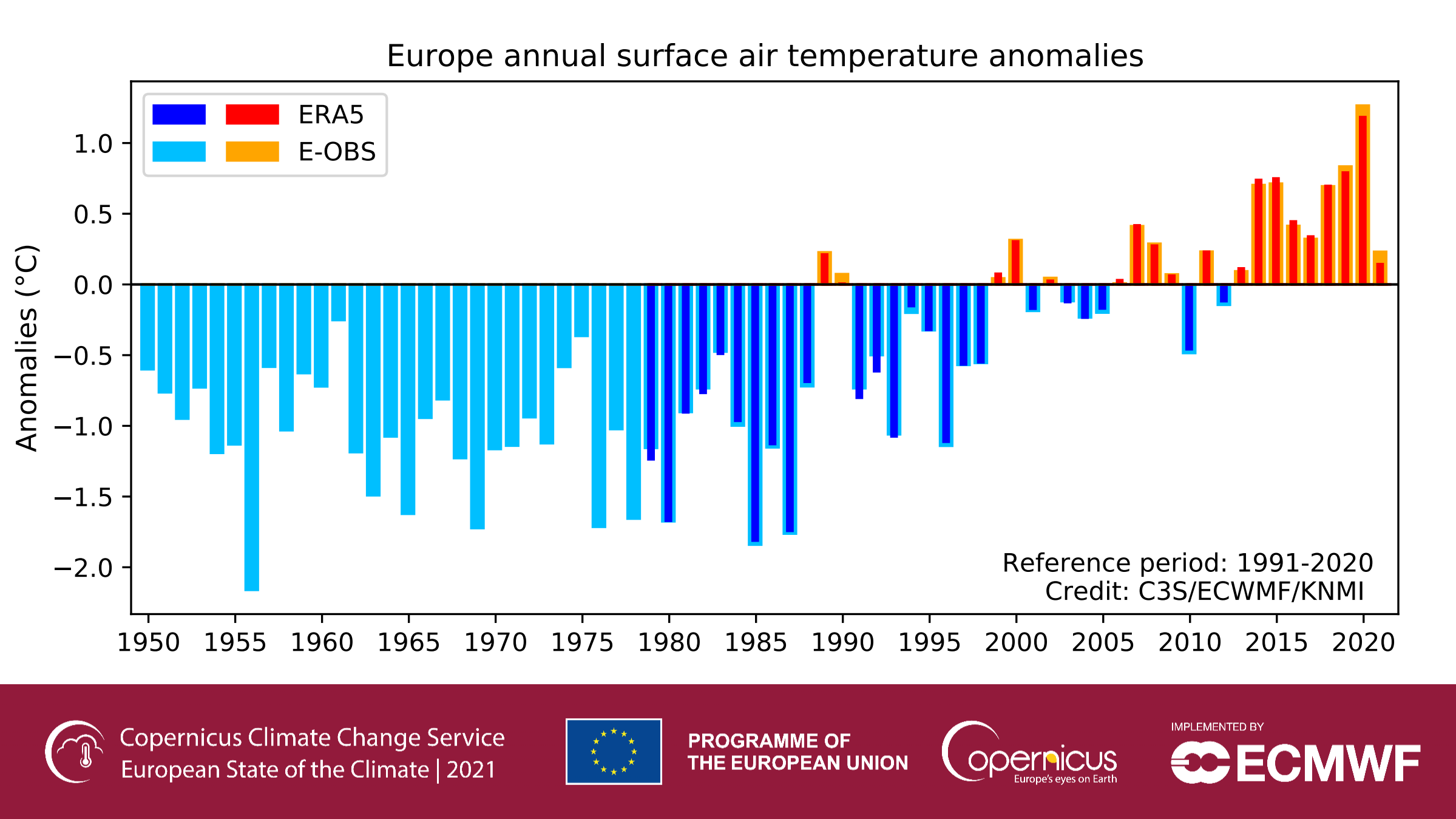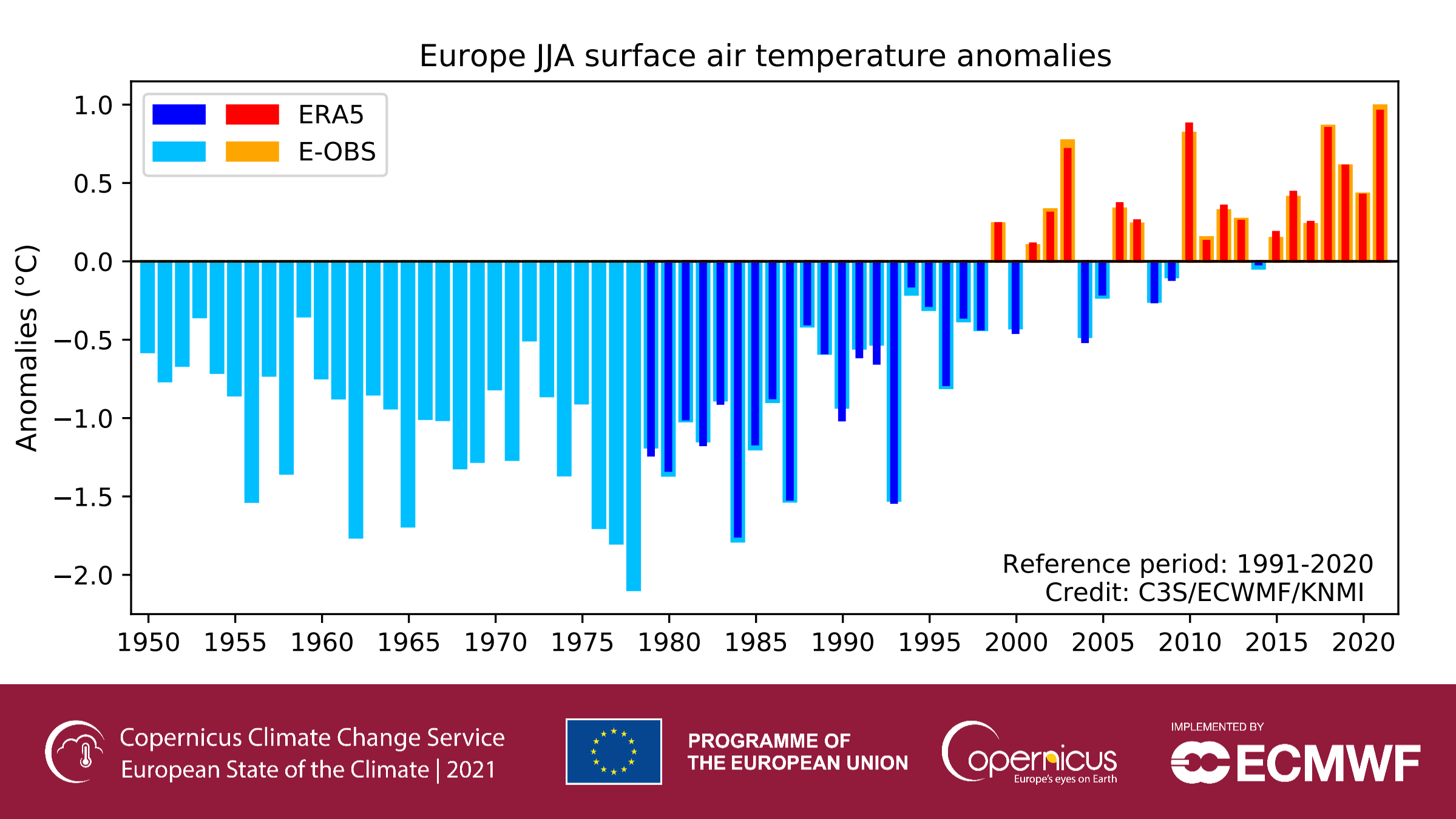Europe suffered year of climate chaos in 2021 with hottest summer on record – “We are facing a lot of challenges”

By Gloria Dickie and Kate Abnett
22 April 2022
(Reuters) – Europeans endured the hottest summer on record last year, with wildfires, floods and intense heatwaves hitting the continent, according to a report by EU scientists released Friday.
Summer temperatures were about 1 degree Celsius above the average over the past three decades, with Italy even recording temperatures of 48.8C – a provisional record for the whole of Europe.
A particularly bad heatwave in the Mediterranean helped to ignite severe wildfires which burned more than 800,000 hectares in countries including Greece, Turkey, and Italy. Meanwhile, record rainfall led to devastating floods across Belgium and western Germany that killed more than 200 people.
The report, published yearly by the EU’s Copernicus Climate Change Service (C3S), draws on satellite observations, on-site measurements, and computer models to provide an update on the state of the continent’s climate.
“We are facing a lot of challenges,” said Mauro Facchini, head of the Copernicus Unit at the EU.

He said the record 2021 temperatures and extreme weather outlined an urgent need for countries to slash their greenhouse gas emissions to avoid further heating that would unleash more destructive weather events.
Globally, the last seven years have been the warmest on record. Last year, however, was slightly cooler compared to recent years as temperatures were tempered by a La Nina weather pattern which cools sea temperatures in the north of the globe.
Though countries pledged under the 2015 Paris Agreement to limit global temperature rise to 1.5 degrees Celsius above pre industrial levels, most have failed to make sufficient progress and last year global CO2 emissions rebounded strongly following a temporary COVID-19 pandemic-induced dip.
Countries are already experiencing the consequences of inaction.
Climate scientists last year found that the disastrous flooding in western Europe last summer was made at least 20% more likely by climate change – reflecting a long-known principle that for every degree the atmosphere heats up, it can hold 7% more moisture, hiking the chance of heavy rain.
“This is one of the most visible and pronounced changes that we are seeing with global warming,” Wim Thiery, a climate scientist at Vrije Universiteit Brussel, told Reuters. [more]
Europe suffered year of climate chaos in 2021, EU report says


